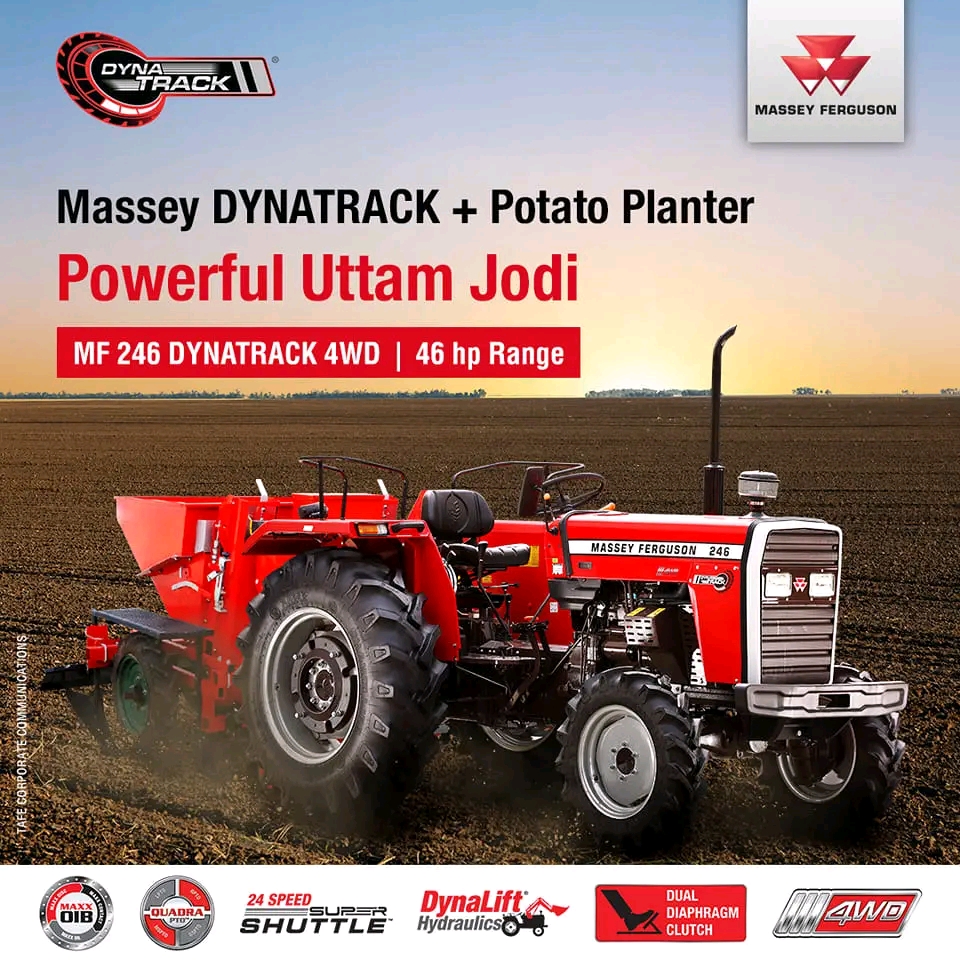Anoop Sharma, Young Professional
Prabha Kant Pathak, Principal Scientist
ICAR- Indian Grassland and Fodder Research Institute, Jhansi
Introduction
Agriculture has always been the heartbeat of India, sustaining millions and shaping the economy. Yet, despite advances since the Green Revolution, much of our farming still depends on traditional, labor-intensive methods. As we dream of a Vikshit Bharat by 2047, farm mechanization emerges as the game-changer for productivity, prosperity and sustainability.
.jpg) |
| "Strong farmers make a strong nation." |
Why Mechanization Matters?
Imagine ploughing acres of land with your hands versus using a tractor. The difference is not just in time but in efficiency, cost and output. Traditional farming can be slow, exhausting and unpredictable. Modern machinery—from tractors to harvesters—ensures timely sowing, precise irrigation and efficient harvesting. The result? Higher yields, less wastage and happier farmers.
 |
| “Machines don’t just work the land - they empower the hands that feed the nation.” |
Boosting Income and Rural Prosperity
Mechanized farming reduces dependence on manual labor and significantly improves efficiency. For example, a tractor-operated plough, cultivator and rotavator can prepare fields in a fraction of the time required manually. Similarly, combine harvesters can reap, thresh and clean crops simultaneously, saving both time and labor costs. With higher yields and reduced post-harvest losses, farmers can earn more and leading to improved rural livelihoods. Increased farmer income not only uplifts families but also strengthens rural economies and creating a ripple effect of development across the nation.
Manual vs Mechanized Farming
- Time saved: 60–70%
- Labor reduced: 50–60%
- Yield increase: 15–20%
 |
| “Mechanization means more crop, less effort.” |
Reducing Drudgery and Attracting Youth
Mechanization makes farming less labor-intensive and more attractive to the younger generation. Currently, many rural youths are migrating to cities due to the hardships of traditional farming. By introducing modern machinery and innovative technologies, agriculture can become a viable and respected profession for encouraging young minds to continue in the farming sector. This infusion of energy, innovation and technology can transform Indian agriculture into a modern, sustainable and profitable enterprise.
 |
| “Smart machines for a sustainable Bharat.” |
Sustainable and Climate-Resilient Farming
Modern farm machinery is increasingly being designed with sustainability in mind. Precision farming tools, automated irrigation systems and soil health monitors help conserve water, optimize fertilizer use and reduce environmental impact. Mechanization combined with smart agriculture technologies ensures that farming practices are climate-resilient, efficient and eco-friendly – a vital step towards achieving the vision of Vikshit Bharat 2047.
 |
“When technology meets tradition, farming becomes the future.” |
Government Initiatives and the Road Ahead
The Indian government has been actively promoting farm mechanization through subsidies, custom hiring centers and training programs for farmers. Programs like the Pradhan Mantri Krishi Sinchayee Yojana and the Sub-Mission on Agricultural Mechanization (SMAM) are aimed at making modern equipment accessible to small and marginal farmers. Custom Hiring Centres (CHCs) are core component of SMAM these centres allow farmers to access advanced machinery through custom hiring services. Agriculture Infrastructure Fund (AIF) Supports the development of agricultural infrastructure including machinery and equipment for farm operations. Digital Agriculture Mission Launched in September 2024, this initiative aims to support digital agriculture through projects like creating digital public infrastructure for the sector. Expanding these initiatives and encouraging public-private partnerships will play a crucial role in scaling mechanization across the country.
 |
| “Government programs bring modern machinery closer to farmers.” |
Conclusion
Empowering farmers through mechanization is more than just adopting modern tools—it is about transforming agriculture into a profitable, efficient and sustainable sector. A mechanized farming ecosystem ensures timely operations, higher yields, better incomes and an engaged youth workforce. As India aspires to become a developed nation by 2047, farm mechanization will be a key pillar for helping realize the dream of Vikshit Bharat where farmers are empowered, agriculture thrives and the nation prospers.
 |
| “Empowered farmers, thriving agriculture and a developed Bharat—farm mechanization is the key to our nation’s future.” |
References
- ICAR (2023). Annual Report 2022–23. Indian Council of Agricultural Research, New Delhi.
- Ministry of Agriculture & Farmers Welfare (2024). Sub-Mission on Agricultural Mechanization (SMAM) Guidelines. Government of India.
- FAO (2022). Farm Mechanization and Sustainable Agriculture in Asia. Food and Agriculture Organization of the United Nations.
- Singh, G. & Kumar, R. (2021). Mechanization in Indian Agriculture: Current Status and Future Prospects. Indian Journal of Agricultural Sciences, 91(7), 915–922.
- NITI Aayog (2020). Strategy for New India @ 75. Government of India.











0 Comments